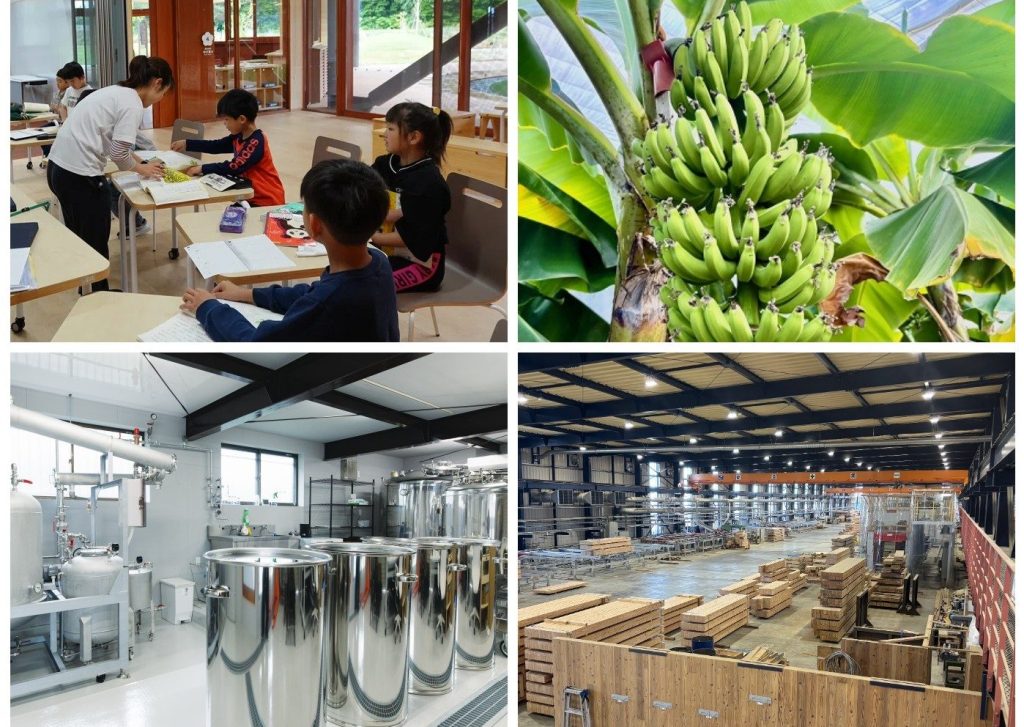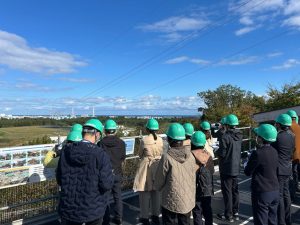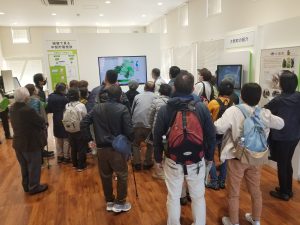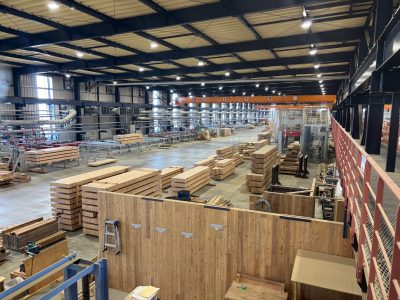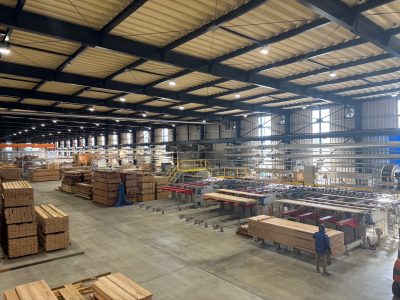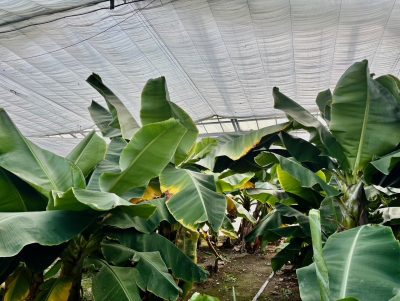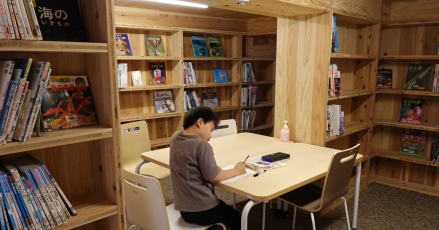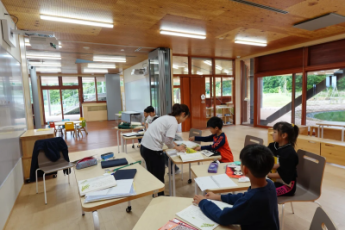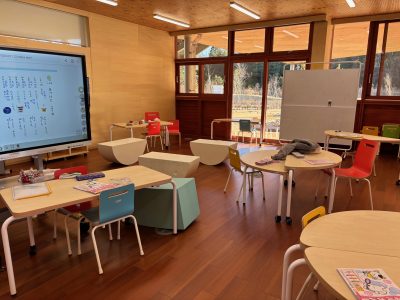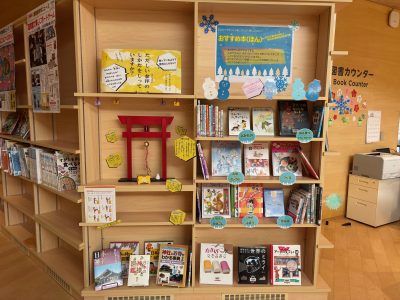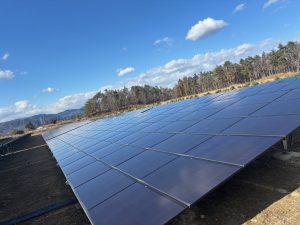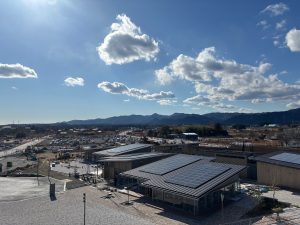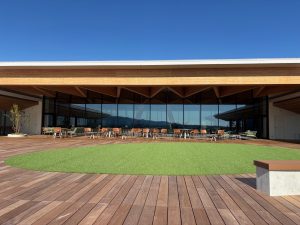実施日 : 2025年02月27日(木) - 28日(金)
Fukushima Press Tour
投稿日 : 2025年02月03日
Fukushima Press Tour
Industry, Education, Energy—Unique Reconstruction Efforts Throughout the Prefecture
Tour Dates: Thursday, February 27–Friday, February 28, 2025
Sponsor: Ministry of the Environment
[Topics]
① Reconstruction of Forestry and Agriculture Using New Technologies
② New Businesses Started by Young New Residents
③ Unique Public School Attracting New Residents
④ New Community Building Aiming for Zero Carbon After Evacuation of the Entire Town
⑤ Interim Storage Facility for Removed Soil Arising from Decontamination Activities After Nuclear Accident
Nearly 14 years have passed since the Great East Japan Earthquake and the accident at the TEPCO Fukushima Daiichi Nuclear Power Station. After decontamination activities and the lifting of evacuation orders in the areas of Fukushima that suffered significantly from the nuclear accident, returned and new residents have been rebuilding their lives and industries one step at a time, even in towns and villages where the population dropped to zero at one time.
With nearly five years having passed since March 2020, when evacuation orders were lifted for all areas except for the Restricted Area, infrastructure and commercial facilities are being built to prepare for the return of residents in Specified Reconstruction and Revitalization Base Areas established within the Restricted Area as well.
At the TEPCO Fukushima Daiichi Nuclear Power Station, the trial retrieval of nuclear fuel debris first carried out in September 2024 was completed in November, and the process for decommissioning has entered the next phase.
◆This tour will visit Fukushima and see the Interim Storage Facility where removed soil and waste arising from decontamination activities after the nuclear accident are being stored. The tour will also interview a forestry business operator, farm, and a new resident who started a distillery, working towards revitalizing industry in the area around the nuclear power station. Other stops will include a public school attracting new residents with a unique education style where children take a proactive role, and a local government aiming to achieve zero-carbon through local use of renewable energy, without relying on power sources such as nuclear power or fossil fuels.
[Tour Details]
1. Interim Storage Facility (Okuma)
—The current status and future of Fukushima’s decontamination
After the nuclear accident, decontamination activities have been carried out in areas where radioactive contamination occurred to reduce radiations levels by removing irradiated topsoil and plant matter such as leaves and twigs.
By the end of December 2024, the total amount of soil and waste transported to the facility was approximately 14 million cubic meters (including from the Restricted area), where it is being stored after disposing of burnable material at the Soil Separation Facilities.
The Interim Storage Facility is a 16-square kilometer facility straddling the towns of Okuma and Futaba, which began operation in March 2015. It is clearly stipulated in the law, that after the start of transport to interim storage, the removed soil and waste are supposed to be finally disposed of outside of Fukushima Prefecture within 30 years (by March 2045).
According to the Ministry of the Environment, Japan, "the Interim Storage Facility straddles Okuma and Futaba, and was built surrounding the TEPCO Fukushima Daiichi Nuclear Power Station to safely manage and store soil and radioactive waste removed as part of decontamination activities until it will be finally disposed of. It was a difficult decision for the towns of Okuma and Futaba to accept its construction".
◆During the tour, participants will visit the Soil Storage Facilities, with an explanation from Ministry of the Environment staff.
【Photo Courtesy of Ministry of the Environment】
2. Woodcore Corporation (Namie)
—Aiming for the recovery of Namie’s forestry industry. Lumber taking advantage of advanced technology and used in the Grand Ring, the symbol of the Expo venue
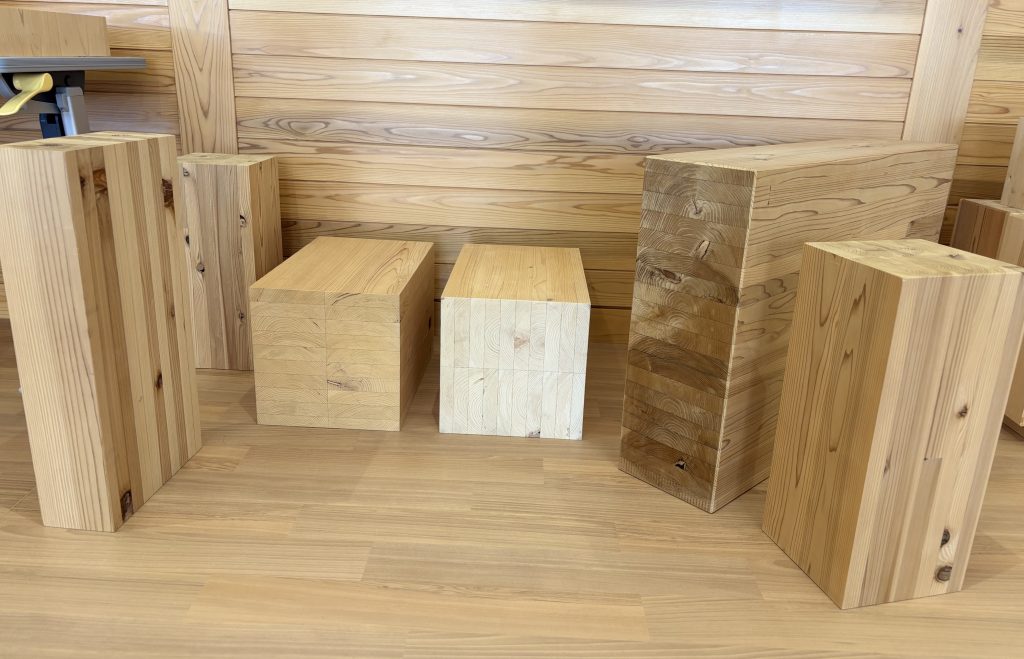
Forest covers approximately 70% of the total area of the town of Namie, and there used to be an active forestry industry in the area. However, it was not possible to cut or sell trees due to the Great East Japan Earthquake and radiation from the nuclear accident, leading to many companies going out of business and significantly damaging the town’s forestry industry.
With the goal of revitalizing the forestry industry and creating jobs, ASADA Lumber Industry Co., Ltd. (a lumber producer in Namie) and Toju Corporation (a laminated timber* producer in Koriyama) jointly invested in the establishment of Woodcore Corporation in 2018. In October 2021, Woodcore, began operating the Fukushima Advanced Manufacturing Center For Laminated Timber (FLAM), with an area the size of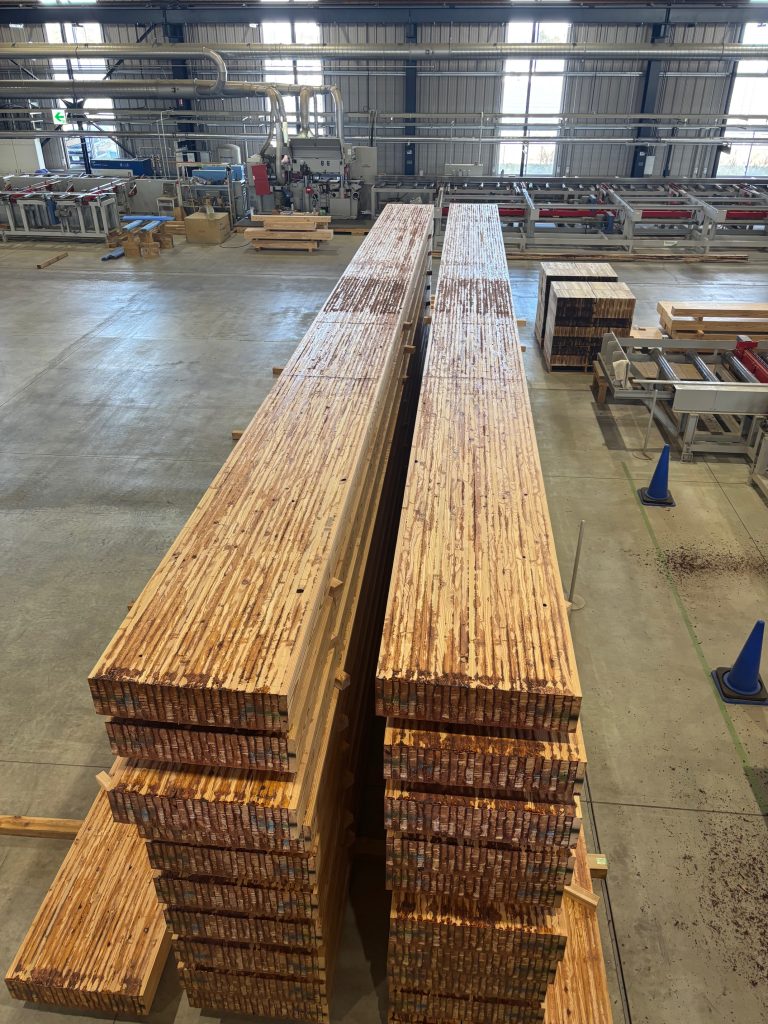 two Tokyo Domes (94,400 square meters). Insisting on using domestic timber, especially timber from Fukushima Prefecture, the company produces laminated timber with large cross sections, which are used in large-scale construction projects, and are made from sugi (cedar), karamatsu (pine), and hinoki (cypress). FLAM was the first in Japan to introduce the use of a high output, high frequency press. A process that required over eight hours to harden after applying the glue with older machines is shortened to less than 20 minutes with a high frequency press heating the glue. This made it possible to mass produce large, high-strength laminated timber in a short time frame.
two Tokyo Domes (94,400 square meters). Insisting on using domestic timber, especially timber from Fukushima Prefecture, the company produces laminated timber with large cross sections, which are used in large-scale construction projects, and are made from sugi (cedar), karamatsu (pine), and hinoki (cypress). FLAM was the first in Japan to introduce the use of a high output, high frequency press. A process that required over eight hours to harden after applying the glue with older machines is shortened to less than 20 minutes with a high frequency press heating the glue. This made it possible to mass produce large, high-strength laminated timber in a short time frame.
Although there were harmful rumors about radiation regarding using timber from Fukushima Prefecture, by measuring radiation levels when acquiring the raw timber, the company ensures the timber’s safety.
After FLAM began operating in earnest, the first project they worked on was laminated timber for the Grand Ring, the symbol of EXPO 2025 Osaka, Kansai, Japan. One of the world’s largest wooden structures, Woodcore, produced and delivered approximately 6,600 cubic meters of laminated timber, out of the 27,000 cubic meters in total of lumber used for the Grand Ring. Mr. ASADA Hidehiro, board director of Woodcore, commented, “I think this is something very happy and significant for Woodcore, Namie, and Fukushima Prefecture. I hope it will be an opportunity for many people to see the quality and safety of Fukushima lumber.”
The output of Fukushima Prefecture’s forestry industry grew past pre-disaster levels for the first time in 2023, at 13.89 billion yen. This was an increase of 7.2% compared to 2010, before the nuclear accident, and is thought to be because the overall price of lumber rose due to a shortage of imported lumber.
<*Laminated timber: A wood material made by gluing together sawn boards made from logs.>
◆The press tour will hear from Woodcore’s president Mr. KAGEYAMA Toshikazu and board director Mr. ASADA Hidehiro about what led to establishing the company, their desire to revitalize Namie’s forestry industry, and about providing timber for the Expo venue. The tour will then see the process for making laminated timber, including the high output, high frequency press, at the Fukushima Advanced Manufacturing Center For Laminated Timber (FLAM), which opened in 2021.

【Photo (Upper) Courtesy of Woodcore Corporation】
3.Hirono Town Promotion Public Corporation: Cultivating Domestic Kirei Bananas (Hirono)
—The challenge of growing bananas in Tohoku and passion for recovery
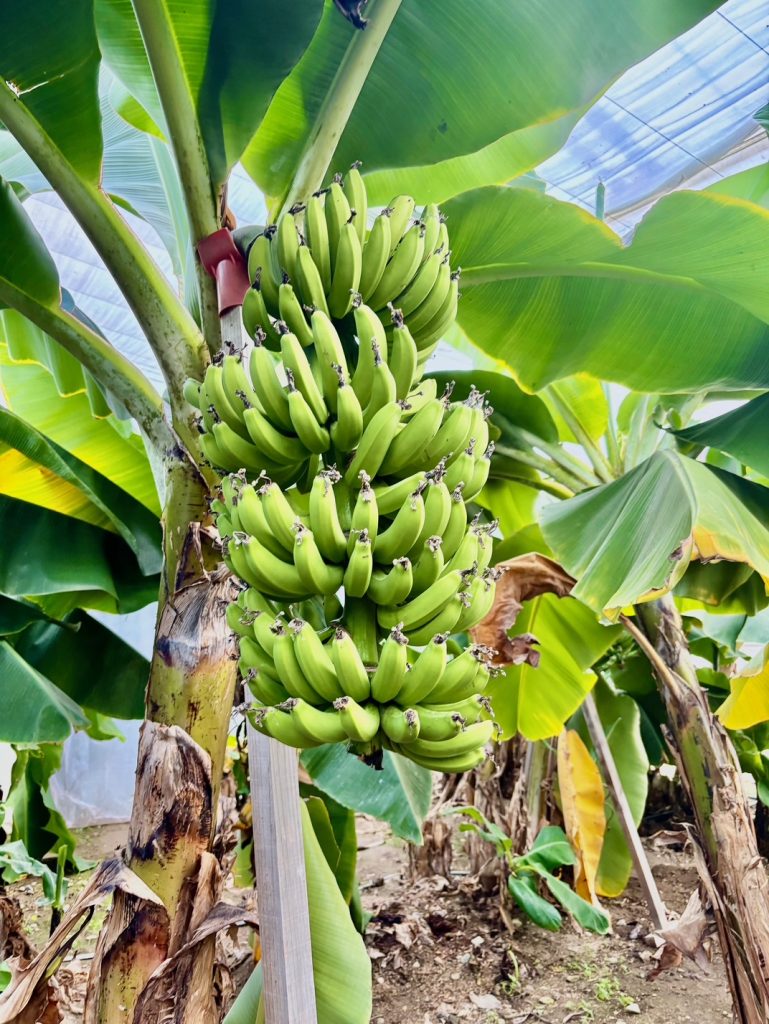 The entire town of Hirono evacuated at one point due to the nuclear accident. With the goal of making a town where residents could have hopes and dreams, in 2018 the Hirono Town Promotion Public Corporation began cultivating bananas, a tropical fruit said to be difficult to grow in Tohoku. In 2019, the first crop of Hirono-grown bananas were harvested, and they were shipped with the name “Bananas from a Town Where the Morning Sun on the Horizon Is Very Pretty from a Hill with Mandarin Oranges,” nicknamed just Kirei (pretty).
The entire town of Hirono evacuated at one point due to the nuclear accident. With the goal of making a town where residents could have hopes and dreams, in 2018 the Hirono Town Promotion Public Corporation began cultivating bananas, a tropical fruit said to be difficult to grow in Tohoku. In 2019, the first crop of Hirono-grown bananas were harvested, and they were shipped with the name “Bananas from a Town Where the Morning Sun on the Horizon Is Very Pretty from a Hill with Mandarin Oranges,” nicknamed just Kirei (pretty).
The town uses Taiwanese banana saplings and cultivates them with an advanced technique known as the “freeze thaw awakening method.” This method involves, over six months, freezing the plant’s seed or growth cell cluster to -60°C then slowly thawing it, promoting rapid growth once the plant sprouts and improving cold resistance. This makes it possible to grow bananas in a cold region like Tohoku. The Hirono Town Promotion Public Corporation has steadily continued cultivation while carrying out proof of concept testing, and now grow around 150 trees of bananas, having harvested around 8,700 bananas in FY 2023. As well as the bananas being sold for between 200 and 300 yen each, product development of sweets using the bananas is underway in a collaboration with the high school students of the local school Futaba Future School.
The name of the banana, “Bananas from a Town Where the Morning Sun on the Horizon Is Very Pretty from a Hill with Mandarin Oranges,” was chosen from approximately 380 entries. According to the Hirono Town Promotion Public Corporation, the name reflects “That they were grown in the nature of Hirono’s beautiful seaside and pretty mountains, as well as a promise to restore the vitality of Hirono which was lost to the disaster and to carry out reconstruction.”
◆The tour will hear from Mr. NAKATSU Hirofumi, president of the Hirono Town Promotion Public Corporation, about why they began growing bananas and their reasons for doing so. The tour will also visit the banana farm in the Tropical Fruits Museum.
*Do not touch the fruits, leaves, etc. of the bananas at the farm.
4. naturadistill Kawauchi Distillery (Kawauchi)
—Spreading to the world gin filled with the beauty of Fukushima’s nature
Mr. OSHIMA Sota, from Tochigi Prefecture, visited the village of Kawauchi while studying at Fukushima University and was struck by its plentiful nature and kind residents. After graduating from university, he worked at a craft beer brewery in Tamura, a city alongside Kawauchi, and learned the skills of the trade. With the desire to make craft gin filled with the beauty of nature, he decided to establish his own business, and in November 2024 opened naturadistill Kawauchi Distillery, which makes craft gin flavored with local plants and fruits.
Approximately 90% of Kawauchi is covered by forest, and it also has ample underground water. The distillery’s first original gin, in addition to using the juniper berries vital to making gin, pursued a Japanese fragrance by using plants mostly grown in Fukushima Prefecture, such as kaya fruit, tachibana orange, kuromoji (laurel), and nioikobushi (magnolia), along with Kawauchi’s underground water. With low-pressure distillation, they carefully extracted the delicate fragrance of the plants to make the gin.
Mr. Oshima traveled the world while in university, and during that time was said cruel things abouts Fukushima by locals. From that experience, he felt strongly that he had to promote the appeal of Fukushima to the world. He commented, “In the future, I would like to distill liquor not just for Japan, but for exporting overseas, in order to promote the appeal of Fukushima overseas. I want to make gin that will make people want to come to Kawauchi.” Plans are underway to open a bar on the second floor of the distillery in June this year.
◆The tour will hear from Mr. OSHIMA Sota, president of Kokage Co., Ltd., and from Mr. TAKAHASHI Kaito, the head of gin production, about what led to establishing a distillery in Kawauchi, the characteristics of craft gin made using local plants and fruits, and future plans including dispelling harmful rumors about Fukushima and expanding overseas. There will also be a tour of the distillery.
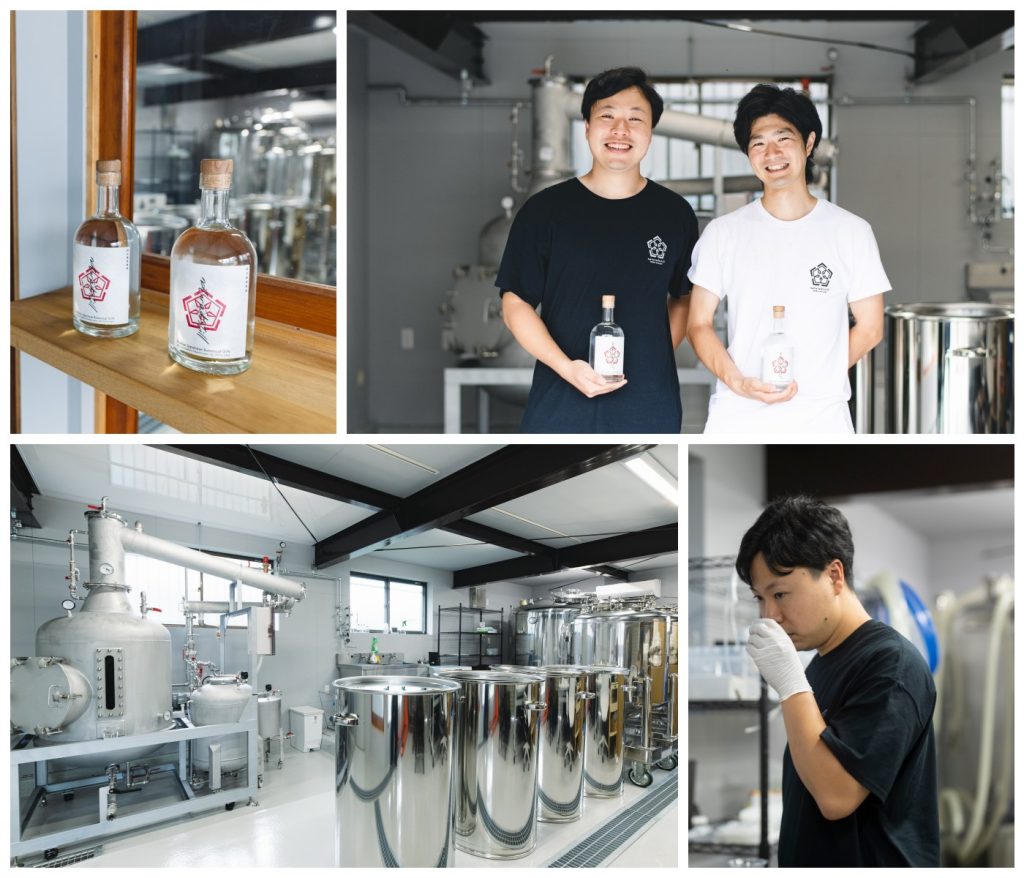
[Photos courtesy of Kokage Co., Ltd.]
5. Manabiya Yumenomori (Okuma)
—No fences or bells. A new style of education emphasizing free thinking and individual qualities and skills is attracting new residents
Manabiya Yumenomori opened in 2023 as a municipal educational facility for children from 0 to 15 years old to learn together, combining a daycare, kindergarten, elementary school, and junior high school.
Based on the concept of being “a new educational space where you can design your own learning along with diversity and intermingling,” Manabiya Yumenomori has no bells indicating when classes start or end, and no predetermined classrooms or seating. Children choose where they want to learn, while building and managing their own schedule. This education system is built around respecting children’s autonomy and allowing them to pursue learning proactively about what they are interested in.
There is no fence around the school building, and as a “community co-creation space” local residents are welcome at any time, with a yard and wooden deck available for natural interaction to occur.
Centered around the Wakuwaku Book Square with around 20,000 books, the building is divided into eleven areas, such as the Runrun Discussion Forest and Dokidoki Atelier. The Wakuwaku Book Square is built so that children can freely interact with the books, with small spaces like hidden forts built into the bookshelves. Efforts have been made so that in this space, children can take their time reading, think by themselves, and inquire into their interests in whichever spot they like.
[Photo courtesy of Manabiya Yumenomori]
Seeking out the unique education of this school, many people have moved from areas such as Kanto and Kansai, and the number of students has grown from 26 when the school opened to 72 as of January 2025. Of these students, approximately 85% are from families who moved to the area from outside Okuma. Among families who relocate for the sake of their children’s education, Manabiya Yumenomori has become an option, and it has contributed to new residents moving to Okuma.
Vice-principal Mr. Keishin Masuko joined the Okuma Board of Education in 2019, and was closely involved in the establishment of the school, such as helping develop a unique education system and design the school building. He commented, “Instead of thinking education has to be a specific way, it can be more free. When this school was established, I wanted to make an educational space where children could learn proactively, pursuing their own interests. I would like school to be a place which children think is fun.”
◆The tour will hear from Mr. MASUKO Keishin, vice-principal of Manabiya Yumenomori, about its educational philosophy, unique education, and the background behind its opening. The tour will also be able to see classes and the interior of the school, and interview some students.
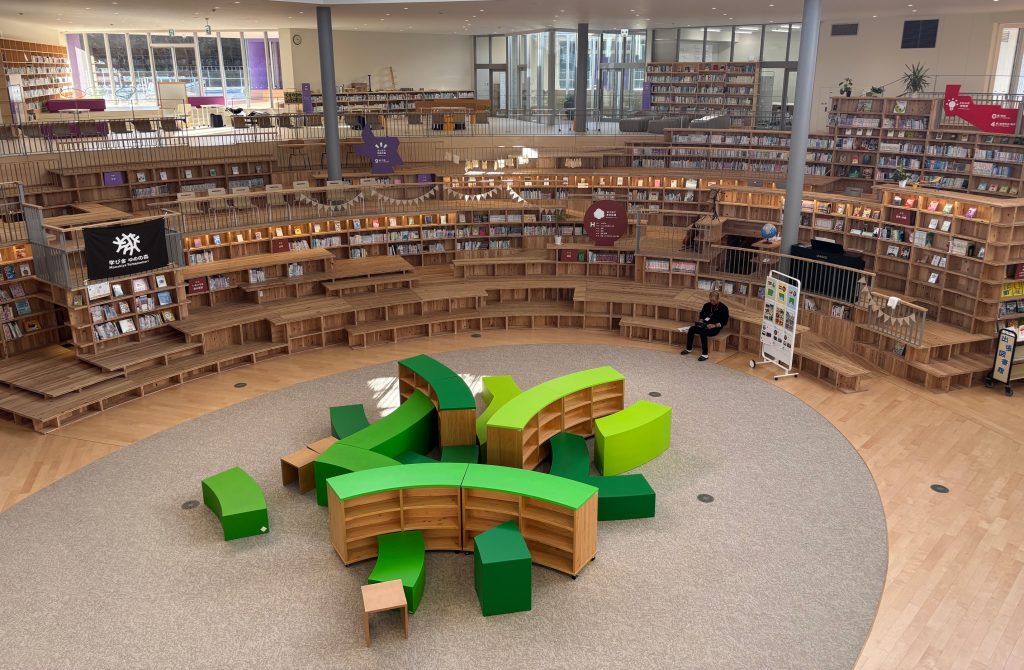
6. Okuma Zero Carbon Initiatives
—New community building after experiencing a full evacuation
In February 2020, Okuma Town made the Okuma 2050 Zero Carbon Declaration and in February 2021 created their Zero Carbon Vision to make that declaration a reality. Aiming to achieve net zero emissions of carbon dioxide ten years earlier than the Japanese national government’s goal of 2050, but that is due to experiencing a full evacuation of the town after the accident at the TEPCO Fukushima Daiichi Nuclear Power Station.
As one of its zero carbon pillars, the town is aiming to adopt renewable energy such as solar, wind, and hydro power, and built a 1.8MW mega solar power plant with a battery capacity of 4MWh on the former site of Okuma Junior High School, which was shut down due to the disaster. The power produced is provided by a private transmission line approximately 3 kilometers in length to the industrial exchange facility CREVA Okuma and commercial facility Kuma SUN Terrace built in the Shimonogami District of JR Ono Station’s west exit, as well as to a social education complex which will house facilities such as a library and museum (planned to be completed in 2027). Including the solar panels installed on each of these facilities, 86% or more of the three facilities power is expected to be supplied by renewable energy. In addition to solar panels, CREVA Okuma has awnings to cut off the summer sun, high thermal insulation for the exterior walls and roof, and equipment to make use of geothermal heat, making it Nearly ZEB*.
In addition to the initiative in Shimonogami, solar panels and batteries are installed in Okuma Town Hall, the public housing area, and the strawberry factory in town. Okuma is aiming to locally produce and consume energy through a regional new power company, cycling through the local economy.
<*ZEB: Net Zero Energy Building. Buildings that greatly reduce the amount of energy consumed annually within the building, while also creating energy to become net zero. A Nearly ZEB uses renewable power to make its annual primary energy usage close to zero, making it nearly ZEB.>
◆The tour will hear from an official with Okuma Town’s Zero Carbon Promotion Section about the various zero carbon initiatives underway in Okuma. The tour will then see the solar panels and batteries at the site of the former Okuma Junior High School, and the industrial exchange facility CREVA Okuma in a Nearly ZEB built in the Shimonogami District Smart Community, established as a pioneering area for achieving the zero carbon target.
【Tour Itinerary】
1.Dates
Thursday, February 27 to Friday, February 28, 2025
2.Schedule
【Thursday, February 27】
|
07:12-08:30 |
Tokyo Station → Koriyama Station |
|
10:20-11:45 |
Hirono Town Promotion Public Corporation: Cultivating Domestic Kirei Bananas |
|
12:00-12:45 |
Lunch |
|
13:30-16:00 |
Interim Storage Facility |
|
16:50-17:50 |
Ministry of the Environment, Japan's briefing |
|
18:15 |
Arrive at hotel (Namie) |
【Friday, February 28】
|
09:00 |
Leave hotel |
|
09:30-10:50 |
Woodcore Corporation |
|
11:30-13:00 |
Okuma Zero Carbon Initiatives |
|
13:05-13:45 |
Lunch |
|
13:50-15:30 |
Manabiya Yumenomori |
|
16:30-17:30 |
naturadistill Kawauchi Distillery |
|
19:31-20:48 |
Koriyama Station → Tokyo Station |
3.Qualification
Bearer of the Ministry of Foreign Affairs of Japan Press Registration Card (in principle)
4.Cost
14,000 yen per person, including transportation, accommodation (breakfast included).
*Information on payment and cancellation fees will be provided to participants.
*Participants will be required to pay their own transportation costs to the meeting place before the tour, and after the tour ends
5. Participants
Limited to 10 participants. (Only one reporter or one photographer from each company, but two participants from each TV team will be acceptable.)
*Participants will be determined by the tour sponsor.
6. Please be sure to confirm and agree to the following before applying:
6-1. Basic Information
(1) This tour is organized by the MOEJ and run by the FPCJ.
(2) The schedule is subject to change without notice.
(3) This tour will require participants to bear a part of the cost but is not a profit-making venture.
(4) The MOEJ and the FPCJ take no responsibility for any accidents, injuries, illness, or other problems which occur during the tour.
(5) There may be some restrictions on photographing and filming at the tour sites. Please follow the instructions of the staff in charge.
(6) This press tour is intended to provide opportunities for news coverage. We request that all participants send a copy of the content of their coverage (article, video, or audio in the case of radio) to the FPCJ after their reports are published or aired. When your report is in a language other than English or Japanese, we also ask you to provide a summary in English or Japanese. By submitting your application, we assume that you have agreed to these conditions.
6-2. Handling of Personal Information
When applying for the tour, you agree to the below.
*Regarding the handling of personal information, the press tour sponsors and operators will respect Japan’s Act on the Protection of Personal Information and all other laws and guidelines on the protection of personal information and handle personal information appropriately.
(1) The tour operators will, when there is a need to do so for the press tour, provide the personal information provided when applying (organization name, personal name, etc.) to other parties in the following cases: -To arrange travel or insurance through travel agencies (Information provided to: Travel agencies, accommodation operators, transportation operators, insurance companies) -To ensure smooth operations during the tour (Information provided to: Interpreters, stops on the tour, interviewees)
(2) The tour operators, to ensure smooth operation of the tour, will share the personal names and organization names of applicants with the tour sponsors.
6-3. Recordings by Press Tour Sponsors or Operators During the Tour
When applying for the tour, you agree to the below.
(1) For the record-keeping purposes, the tour operators may film or photograph the tour while it is happening. The copyright holders for these photos or videos will be the tour sponsors.
(2) Photos, videos, or articles of the press tour may be uploaded to websites or social media accounts operated by the sponsors or operators.
(3) The likeness or voice of participants may appear in the abovementioned photos or videos, but you agree to their use by the sponsors or operators.
7. FPCJ Contacts
ISHIKADO (Ms.), MIZUTANI (Ms.), Media Relations Division
(Tel: 03-3501-3405, E-mail: ma@fpcjpn.or.jp)
****************************************************************************************************************************************************************
◆When applying for the tour, you agree to the following conditions◆
- Press tours have participants from multiple media organizations, and interviews, filming, and photographing are generally carried out jointly. There is no guarantee that you will be able to perform individual interviews or take individual videos at any of the stops on the tour.
- You must follow the instructions of the tour sponsor and operators regarding the tour schedule, timing, and restrictions on taking videos or photos. If you refuse to follow instructions, you will no longer be allowed to participate in the press tour from that point on.

